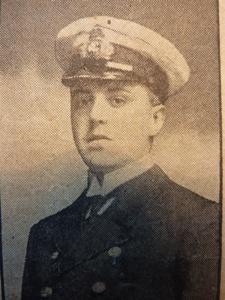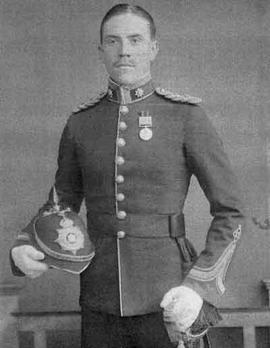Fevez, David Gronow Eugene, son of Eugene Leon Fevez of Esher and his second wife Ethel Gronow, d. of Frederick William Oliver (qv); half brother of Derek John Fevez (qv); b. 12 Jan. 1919; adm. Sept. 1932 (G); left July 1936; PO RAF, killed in action over France June 1940.
David Gronow Eugene Fevez was born at “Eversleigh”, Addlestone, Chertsey, Surrey on the 12th of January 1919 the elder son of Eugene Leon Fevez OW, a director of a wholesale textile company, and his second wife, Ethel Gronow (nee Oliver) Fevez of “Eversleigh”, Addlestone, Chertsey, later of 24, Woodville Road, Bexhill-on-Sea in Sussex. He was educated at Westminster School where he was up Grant’s’ from September 1932 to July 1936. He attended the Flying School at Gatwick airfield on the 8th of August 1939 and was commissioned as an Acting Pilot Officer on probation in the Royal Air Force on the 9th of October 1939. He was posted to No. 3 Initial Training Wing at Hastings, Kent on the 9th of October 1939 for pilot training and to No. 3 Service Flying Training School at RAF South Cerney on the 21st of October 1939. He was promoted to Pilot Officer on probation on the 28th of April 1940 and was posted to No. 1 School of Air Cooperation on the same day. He was posted to 26 Squadron on the 29th of May 1940, who had been based at Authie airfield in France before moving to RAF Lympne on the 20th of May 1940.
David Fevez and his Observer/Air Gunner, Sergeant Robert Donald Keiler Cochrane, took off from Boos near Rouen on the morning of 5th of June 1940 in Lysander Mk II N1211 for a reconnaissance of the Somme area. The aircraft was flying to the south west of Abbeville when it was attacked and shot down by Hauptmann Muller of 4./JG3. The aircraft crashed near Ercourt at 12.10pm killing both men.
His mother received the following telegram dated the 6th of June 1940: - “Regret to inform you that your son Pilot Officer David Gronow Fevez is reported missing as the result of air operations on 5th June 1940. Letter follows. Any further information received will be immediately communicated to you. Should information reach you from any source please inform this department.”
One of the bodies of the crew was found by the Germans close to the wreckage of the aircraft and was buried at the crash site. Two months later another body was found in a wood some 200 yards from the crash site and was wearing an unopened parachute. He was buried with his comrade. In 1941 some locals moved them to the village cemetery and marked them both as unknown airmen. In 1946 No. 1 Missing Research and Enquiry Unit, Royal Air Force exhumed the bodies, identified them and reburied them at the same location.
His brother, Captain Robin Louis Gronow Fevez OW, 2/5th Battalion, The Queen’s Royal Regiment (West Surrey) was killed in action on the 10th of September 1943.
He is buried at Ercourt Churchyard Cemetery, France.

